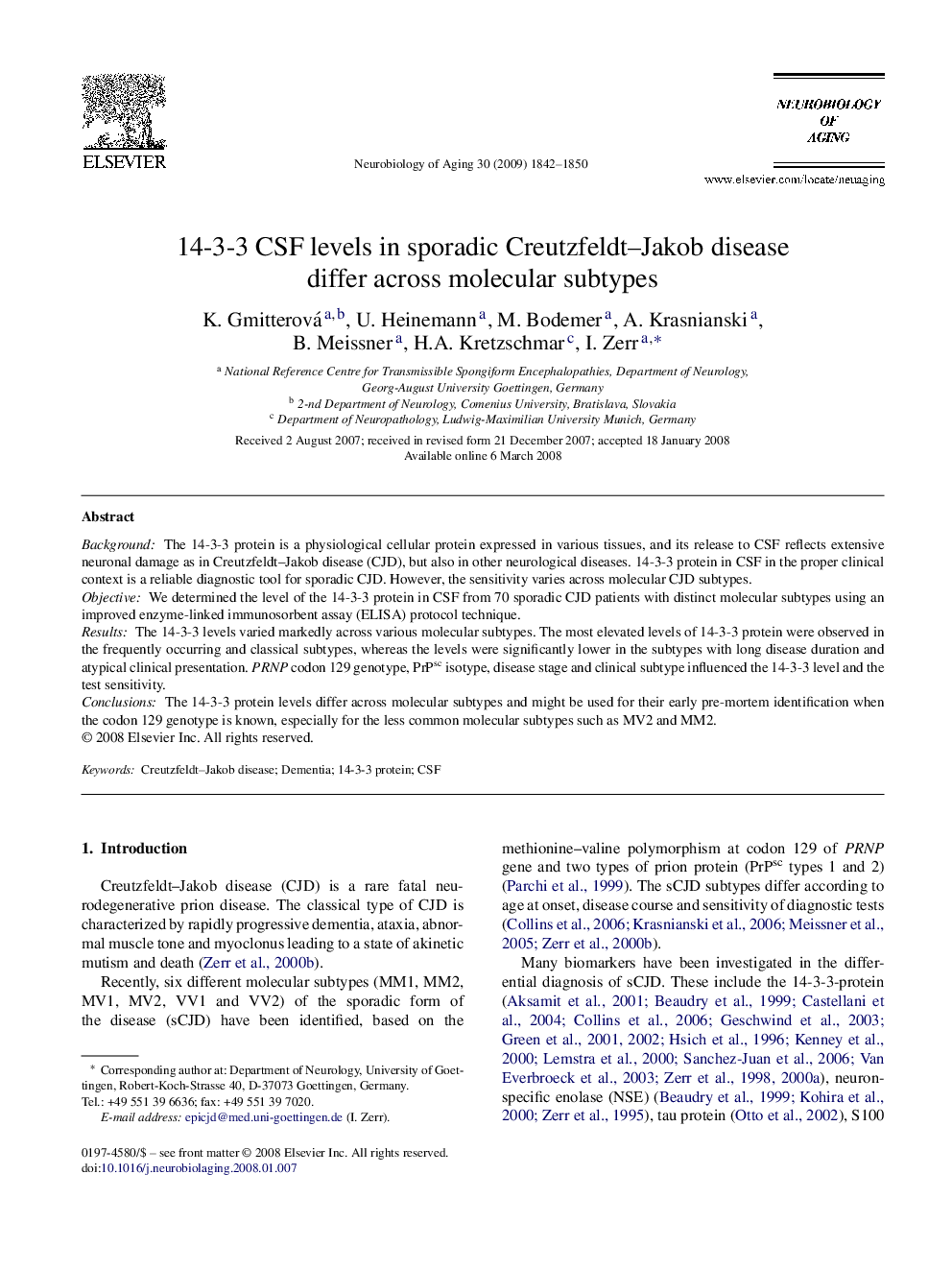| Article ID | Journal | Published Year | Pages | File Type |
|---|---|---|---|---|
| 329449 | Neurobiology of Aging | 2009 | 9 Pages |
BackgroundThe 14-3-3 protein is a physiological cellular protein expressed in various tissues, and its release to CSF reflects extensive neuronal damage as in Creutzfeldt–Jakob disease (CJD), but also in other neurological diseases. 14-3-3 protein in CSF in the proper clinical context is a reliable diagnostic tool for sporadic CJD. However, the sensitivity varies across molecular CJD subtypes.ObjectiveWe determined the level of the 14-3-3 protein in CSF from 70 sporadic CJD patients with distinct molecular subtypes using an improved enzyme-linked immunosorbent assay (ELISA) protocol technique.ResultsThe 14-3-3 levels varied markedly across various molecular subtypes. The most elevated levels of 14-3-3 protein were observed in the frequently occurring and classical subtypes, whereas the levels were significantly lower in the subtypes with long disease duration and atypical clinical presentation. PRNP codon 129 genotype, PrPsc isotype, disease stage and clinical subtype influenced the 14-3-3 level and the test sensitivity.ConclusionsThe 14-3-3 protein levels differ across molecular subtypes and might be used for their early pre-mortem identification when the codon 129 genotype is known, especially for the less common molecular subtypes such as MV2 and MM2.
